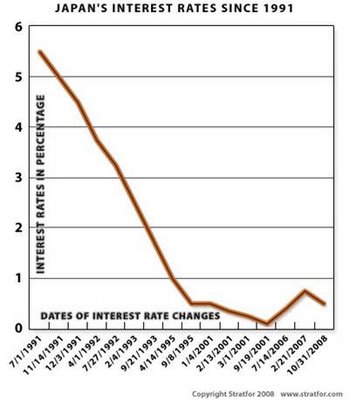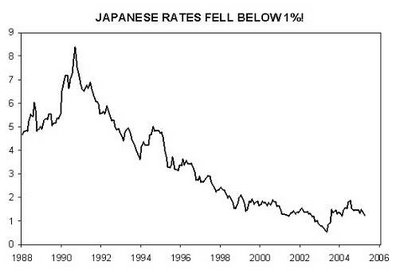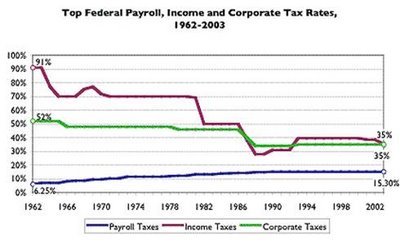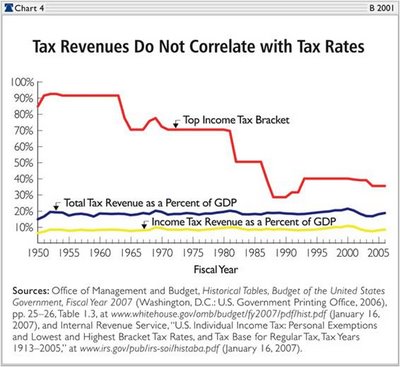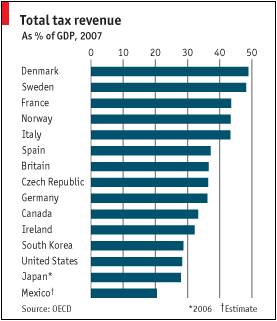Some commentators have argued that the proposed California “warrants” are similar to local currencies (see, e.g., Mark Thoma). In this piece I discuss experiments with local currencies and continue my argument that if California were to accept its own “warrants” in payment to itself, it could turn these into a functioning currency free of the defects of local currencies.
Interest in local currencies has soared in recent years, with nearly 100 U.S. communities experimenting with them. While proponents offer a variety of arguments in favor of local currencies, they share three common themes. First, there is concern that the use of a national, monopoly, currency creates a variety of economic, social, and environmental problems. Second, local currencies are said to improve regional communities, again across several dimensions including economic, social, political and environmental spheres. Third, many proponents want to reduce the power of national government, recognizing a relation between the monopoly of currency issue and centralization. They believe that decentralized money would shift power back to the communities.
At the same time, critics object that most local currency experiments quickly fail. Even the successful ones never displace local use of the national currency to any significant degree. Local currencies are inconvenient and appear to go against the prevailing tide of use of credit and debit cards rather than cash. Retailers must keep two sets of books, and many limit acceptance of local currencies to some kinds or amounts of purchases. Sales taxes must be paid in the national currency, so retailers must either collect taxes in the national currency, or pay taxes for the customers. In some cases, local currencies are accepted at a discount—with either the retailer or the customer bearing the cost. When the discount is borne by the retailer, businesses with low margins are reluctant to accept local currencies. Finally, in a national, and global, economy, most production and sales involve economic activities that are geographically dispersed–making it unlikely that local currencies can ever play much of a role.
The BerkShares program grew out of previous local currency systems used in the region. Local banks maintain a primary (currency exchange) market for BerkShares, selling and buying them for $0.90. Local merchants agree to accept BerkShares one-to-one against the dollar, effectively providing a ten percent discounted price. (This is because a customer can obtain one BerkShare for only ninety cents, purchasing an item priced at a dollar.) Merchants redeem excess BerkShares at participating banks at the fixed rate of one BerkShare equals ninety cents. Banks hold 100% dollar reserves against BerkShares issued, and absorb the cost of operating the exchange. Local consumers (and tourists) have a strong incentive to use BerkShares to take advantage of the ten percent discount; merchants have an incentive to accept them only if their sales increase sufficiently to offset the lost revenue due to the discount. This discount is treated as a business expense, much like a coupon or discounted sales price. There are now over 300 merchants participating and over 1.5 million BerkShares have been put into circulation.
A decade ago, the University of Missouri-Kansas City (UMKC) created a local currency, the Buckaroo (derived from slang for the dollar, “buck”, and from the University’s kangaroo mascot), with two purposes in mind: to teach students how a national currency “works”, and to provide community service to the Kansas City area. Most college students today are used to community service requirements, so the second objective could have been met by requiring that each student complete five service hours for every course. With 10,000 students enrolled in three courses each, 150,000 community service hours would be performed each semester—thereby accomplishing many of the community objectives identified above. However, we decided to provide more flexibility while enhancing the educational experience, so we created the Buckaroo. We provide to each community service organization as many Buckaroos it desires, stipulating that the provider pay only 1 Buckaroo per hour of labor.
Of course, on the first day of class when we tell students that they can earn Buckaroos by working at local charities, they invariably ask “but why do I want Buckaroos?”. The answer is that each student faces a 5 Buckaroo tax, which must be paid before the student can pass. Students are free to beg, borrow, earn, or exchange dollars (or any other valuables) to obtain the required Buckaroos. The vast majority of them choose to work with local community service providers to earn their Buckaroos. Many students work extra hours to earn more Buckaroos than required to pay their taxes. They accumulate savings in the form of Buckaroos, which they are able to exchange for dollars, or to purchase goods and services from fellow students.
We have a “Treasurer” who keeps track of “spending” (Buckaroos spent into circulation by community organizations) and “tax receipts” (collected by professors). It is instructive to note that the Treasury has run a budget deficit every semester since the program’s inception, as students earn more buckaroos than necessary to pay taxes, saving some for future use (or souvenirs) or losing them. We also take informal surveys to gauge the Buckaroo-dollar exchange rate, which varies over the semester (the Buckaroo strengthens at the end as desperate procrastinators realize they need to pay their tax). Over the decade, the Buckaroo appreciated considerably against the dollar, rising from a range of $5-$10 per Buckaroo to the current $10-$20—presumably reflecting the rising nominal dollar reservation wage of students. However, the Buckaroo’s purchasing power has remained absolutely constant at one hour of student labor per Buckaroo. If we allowed community service providers to pay 2 Buckaroos per hour, the value of the currency would immediately fall by half in terms of labor—and it would probably depreciate against the dollar. However, as the monopoly supplier of the currency, we can fix its purchasing power in terms of the only thing we buy—student labor.
Conclusion: How can we ensure a currency’s use?
The Buckaroo is a “tax driven” currency: students demand Buckaroos to pay taxes so that they might pass their courses. The US dollar is also tax driven: the US government imposes taxes in dollars and will attach income or property to enforce the liability. It spends dollars into circulation, through its purchases and social spending; it also can lend them into circulation. The purpose of the Buckaroo tax is to move “private” resources (student labor) to the “public” sector (of community service providers)—as is the case with all tax systems. UMKC created the Buckaroo to facilitate that public purpose. In the case of tax driven currency, so long as the tax is enforceable there is a guaranteed demand for the currency at least as great as the total tax liability. And, as the Buckaroo program shows, actual demand will exceed the tax liability because there is a desire to earn and hoard extras. We can envision continued expansion of the program, with local student hang-outs accepting Buckaroos for cappuccinos while paying a Buckaroo wage premium to student baristas (being careful not to run afoul of IRS and minimum wage laws!). In that case, the demand for Buckaroos would expand, fueled by use beyond taxes and payment for community service work—just as the dollar is used outside transactions with the government.
The dollar and the Buckaroo are not unique; indeed it could be argued that tax driven currencies have been the rule, not the exception, throughout recorded history. However, we do not need to debate such a controversial claim—all we need to do is to understand that a tax is sufficient to create a demand for a currency.
As discussed, most local currencies have failed (of the 82 created between 1991 and 2004, only 17 remained by 2004). Those that succeeded shared some combination of the following characteristics: an exchange rate pegged to a strong national currency by a trusted institution; substantial supplies of unemployed or underemployed workers; businesses operating below capacity; and a strong community spirit, led by liberal, middle class residents. These characteristics are not always easy to replicate nor are they necessarily desirable. If the goal is to displace the national monopoly currency, linking the local currency to it appears inconsistent—especially if one fears national government policy is inflating away the value of the nation’s currency. If unemployed workers and excess capacity are required to keep the local currency strong, then success at building a sustainable region might threaten the currency.
Could tax driven local currencies work? In Argentina as the financial crisis deepened after 2000, local governments began to issue “Patacones” (bonds with interest) as local currencies, paying workers and suppliers, and accepting them in tax payment. Utility companies began to accept them—knowing they could pay part of their taxes with them–and acceptance spread even to international corporations such as MacDonald’s. A local government could help to stimulate circulation of BerkShares by accepting them in tax payment. Firms and households with local tax liabilities would be encouraged to accept BerkShares. Local government could pay part of its bills using the local currency. Finally, so long as there are always jobs available for anyone desiring to work for BerkShares, an increase in the demand for the local currency would always generate more employment.
As Marshall Auerback, Warren Mosler, and I have been arguing, California can turn its warrants into sovereign currency by agreeing to accept them in payments to the state. Note that we ARE NOT arguing that California should make them “legal tender, payable for all debts public and private”—this is something it cannot do.
As a stopgap measure, this will ensure a demand for the state’s IOUs. Each individual vendor, contractor, or even state employee will accept the state’s new warrants up to the individual’s expected tax liability. Eventually the warrants will also be accepted by retail establishments and others who also have liabilities to the state of California—meaning that the state could (eventually) issue a number of warrants equal to the total of all such obligations owed to the state, on an annual basis.
The next step is to issue these IOUs at zero interest. The taxes, fees, and liens will be sufficient to generate a demand without promising interest. Currency is simply an IOU that does not pay interest—it is “current”. As I suggested before, the state can also accept its own “currency” in payment of fees and tuition paid to state institutions of higher learning—further increasing demand.
Unlike other local currencies around the country—such as the BerkShare in Massachusetts, the new California currency would then be “tax driven”, thus sustainable. In other words, it would be a sovereign currency backed by the state’s ability to impose taxes.



